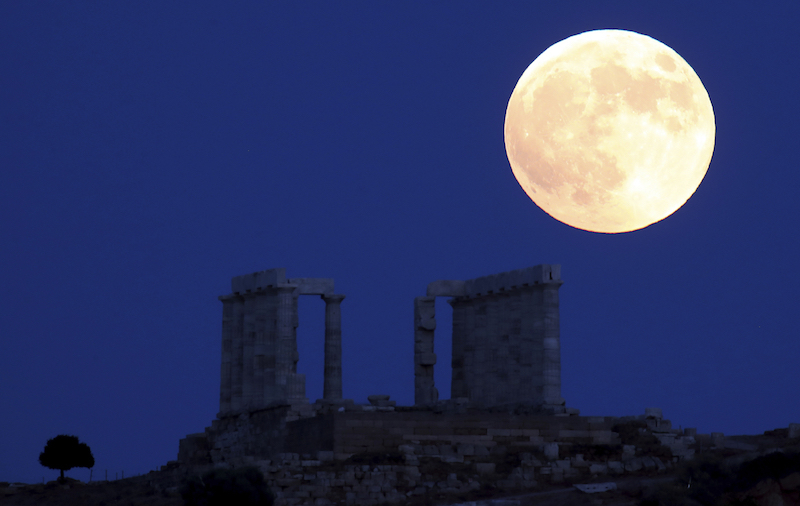This year began with a partial solar eclipse. A little more than halfway through 2019, much of the world will see a partial lunar eclipse Tuesday night or Wednesday morning, depending on where you live.
The partial lunar eclipse will be visible in Africa, most of Europe, a large portion of Asia, the eastern part of South American and the western part of Australia, reported the Europe-based Royal Astronomical Society. North America will miss out on the view except for its most eastern points, like Nantucket, parts of Maine and Nova Scotia.
In the UK, the moon will be low in the sky, so unobstructed views of the southern and southeastern horizon are best, according to the astronomers with the Royal Astronomical Society. The moon will rise at 21:07 BST, showcasing the partially eclipsed moon. Check Time and Date to see when it will happen in your area.
Tonight the UK and eastern hemisphere will see a partial #LunarEclipse, on the same day as the #Apollo50 anniversary. If you have a clear sky, and an unobstructed southeastern horizon, take a look after sunset. https://t.co/8ks4GzvkLT pic.twitter.com/D58T6iUY9v
— Royal Astronomical Society (@RoyalAstroSoc) July 16, 2019
Lunar eclipses can occur only during a full moon. The moon will be in perfect alignment with the sun and Earth on Tuesday, with the moon on the opposite side of the Earth from the sun.
Earth will cast two shadows on the moon during the eclipse. The penumbra is the partial outer shadow, and the umbra is the full, dark shadow.
When the full moon moves into Earth’s shadow, it will darken, but it won’t disappear. Sunlight passing through Earth’s atmosphere will light the moon in a dramatic fashion, turning it red.

Depending on the weather conditions in your area, it may be gray, rusty, brick-colored or blood-red.
This happens because blue light undergoes stronger atmospheric scattering, so red light will be the most dominant color highlighted as sunlight passes through our atmosphere and casts it on the moon.
The Virtual Telescope Project will share a live stream of the lunar eclipse just a few degrees apart above the skyline of Rome.
And unlike solar eclipses, especially the total solar eclipse in August 2017, the lunar eclipse is safe to view with the naked eye or binoculars.
Why Is July Such an Important Month in Moon History?
Watch:
This year, the first new moon of July occurred on July 2 at 3:16 p.m. EST, while the second will take place at 11:12 p.m. on July 31, according to the Old Farmer’s Almanac.
Month’s end’s new moon is also called a black moon, because a new moon is not illuminated by the sun’s rays, and it can be hard to see it.
There might not be too much to see when a black moon rises, but the good news is the surrounding skies will be clear and excellent for stargazing. That is, unless the thunderstorms arrive!
Jupiter will have already set as morning twilight arrives on July 16, and Saturn will be low in the sky at around 7 degrees above the horizon, seemingly close to the full moon. Venus will be rising 40 minutes before sunrise.
Mercury will emerge at dawn at the end of July in the east-northeast, and by the beginning of August, it will be visible.
Next month, when the morning of the full moon on Aug. 15, 2019, arrives, Mercury will be the sole planet visible in the morning twilight, and if you look around 4 degrees above the horizon, you will spot it. You can see the Moon Phase Calendar for your city here.
The first men to land on the moon, Neil Armstrong and Buzz Aldrin, planted the American flag on the moon’s surface on July 20, 1969, making the July moon one of historical significance.

Epoch Times reporter Chris Ford contributed to this report.
![]()


